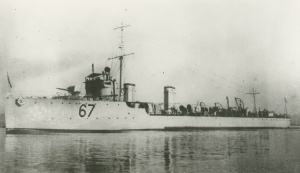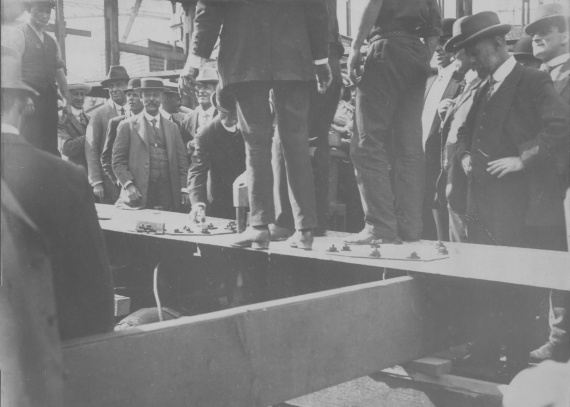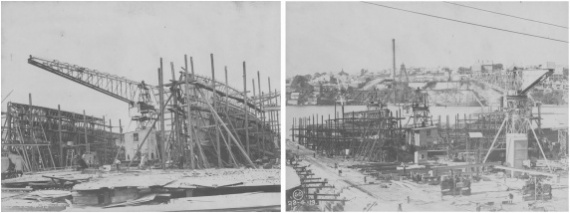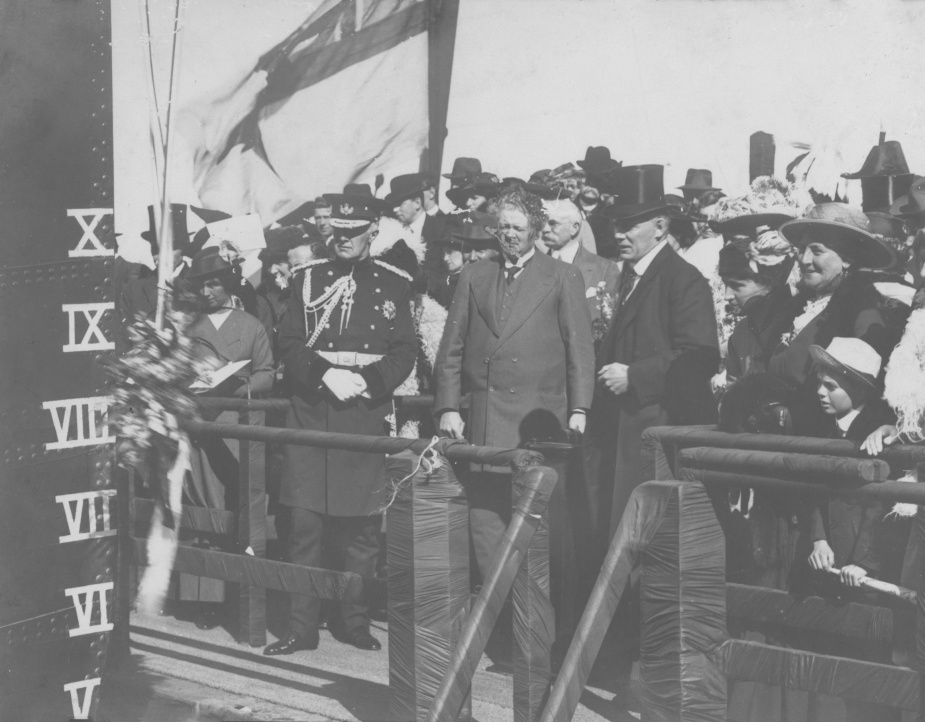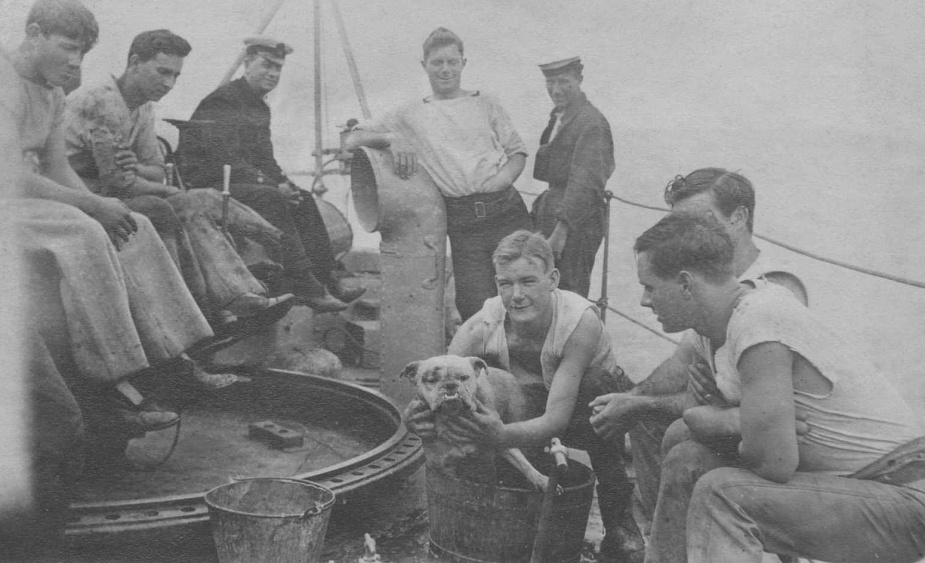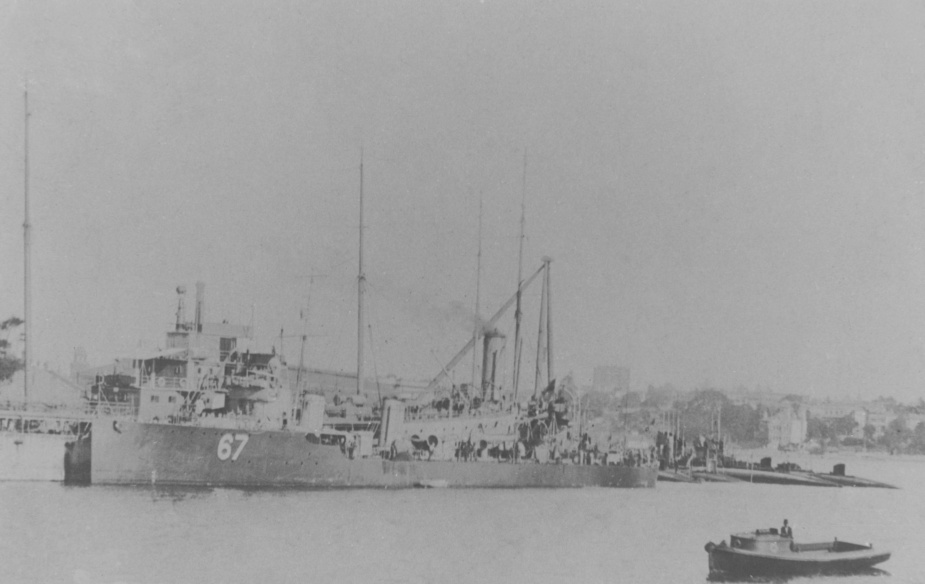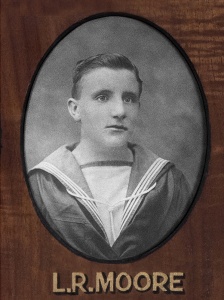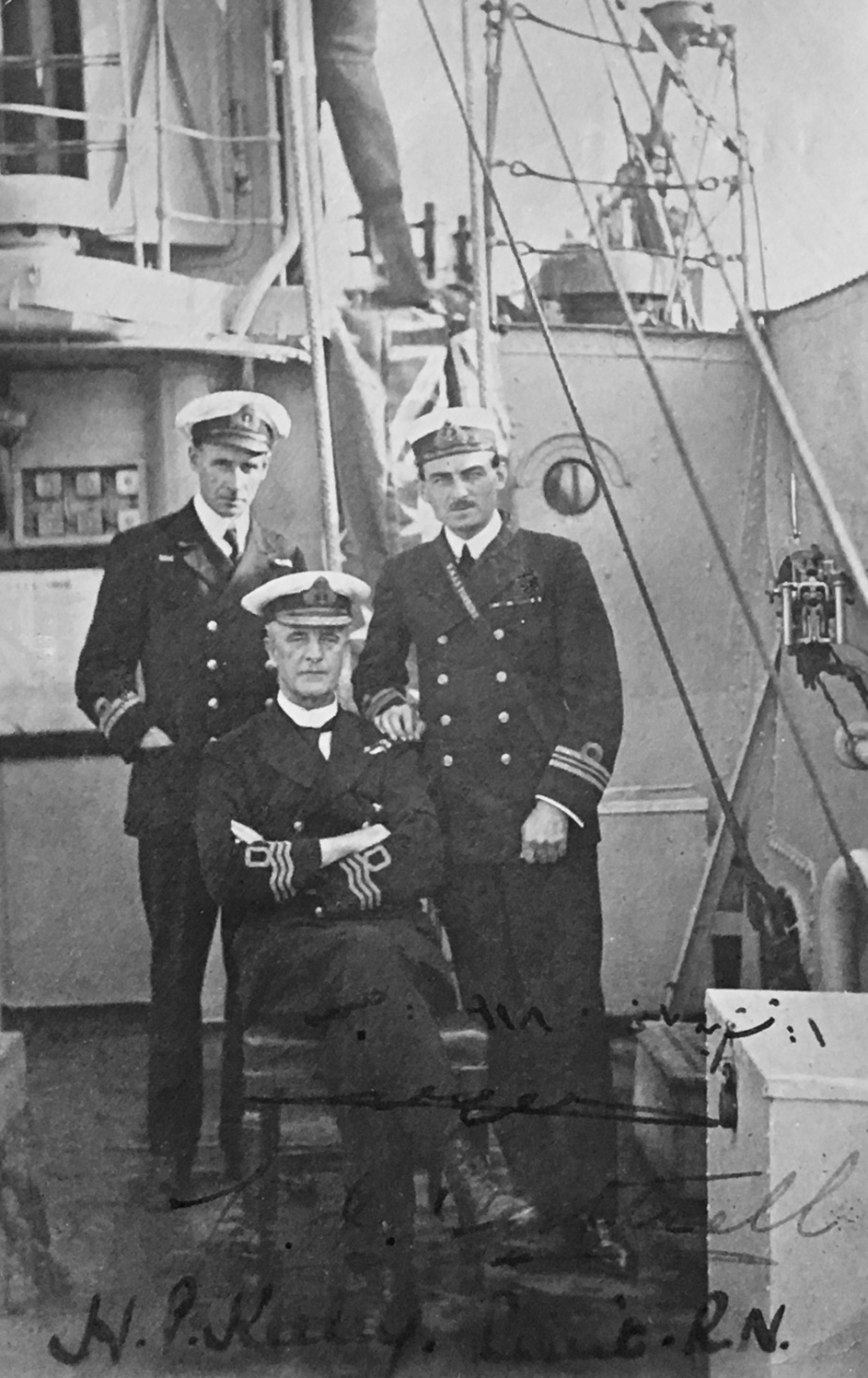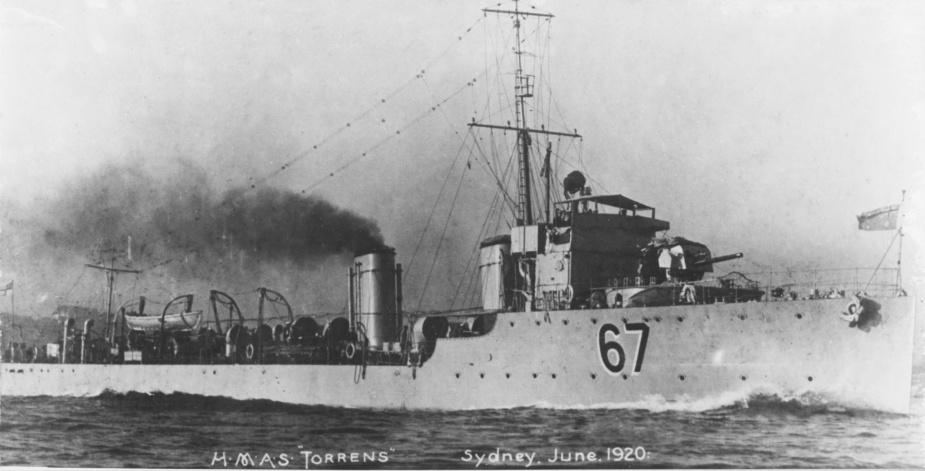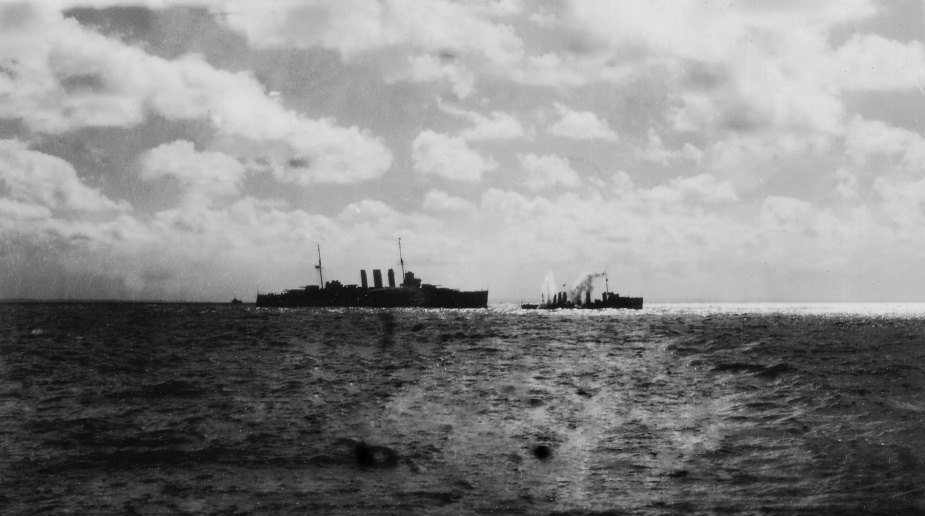HMAS Torrens (I)
| Class |
River Class |
|---|---|
| Type |
Torpedo Boat Destroyer |
| Pennant |
D67 |
| Builder |
Cockatoo Island Dockyard, Sydney |
| Laid Down |
25 January 1913 |
| Launched |
28 August 1915 |
| Launched by |
Lady Helen Munro-Ferguson, wife of the Governor-General |
| Commissioned |
3 July 1916 |
| Decommissioned |
12 May 1926 |
| Dimensions & Displacement | |
| Displacement | 700 tons |
| Length | 250 feet 9 inches |
| Beam | 24 feet 6 inches |
| Draught | 8 feet 6 inches |
| Performance | |
| Speed | 26 knots |
| Complement | |
| Crew | 66 |
| Propulsion | |
| Machinery | Parsons turbines |
| Horsepower | 10,600 |
| Armament | |
| Guns |
|
| Other Armament | 3 x 18-inch torpedo tubes |
| Awards | |
| Battle Honours | |
HMAS Torrens was one of six River Class torpedo boat destroyers built for the Royal Australian Navy between 1909 and 1916. During the First World War they formed the Australian Destroyer Flotilla. Her sister ships were HMA Ships Huon (I), Parramatta (I), Swan (I), Warrego (I) and Yarra (I).
Torrens was laid down on 25 January 1913 at Cockatoo Island Dockyard, Sydney. She was launched by Lady Helen Munro-Ferguson, wife of the Governor-General on 28 August 1915 and was later commissioned at Sydney on 3 July 1916 under the command of Lieutenant Kenneth P Dalglish RN.
Torrens began her seagoing service as a unit of the British Far East Patrol. She departed Sydney on 28 August 1916 in company with Swan and arrived at Sandakan in Borneo on 17 September 1916. Based first at Sandakan and later at Singapore, Torrens helped to maintain patrols in the Malayan Archipelago until the close of May 1917. The historian A.W. Jose described the eight months of almost constant patrolling as 'valuable drudgery under tropical conditions.'
Following a refit in June, Torrens left Singapore on 2 July 1917 to proceed to the Mediterranean in company with Huon and Swan. On 7 July, at Cocos Island, the three Torpedo Boat Destroyers joined Warrego, Parramatta and Yarra to form the Australian Destroyer Flotilla under the command of Commander William Warren RN in Parramatta.
From Cocos Island the flotilla proceeded to Diego Garcia to search the archipelago for survivors of two British ships, Jumna and Wordsworth, which had disappeared without trace early in 1917. Nothing was found and the destroyers continued their voyage to the Mediterranean, arriving at Port Said on 9 August 1917.
On 12 August the Flotilla, less Swan and Warrego, sailed for Malta escorting a convoy of merchant ships. En route on 16 August, Parramatta sighted and attacked a submarine. Torrens sighted a second periscope and fired three rounds from her 4-inch gun as she approached. Able Seaman James Brown was injured during this action when he stood too close to the recoiling breech and was struck in the face and knocked out. Believing that Brown was dead the remainder of the gun crew carried on their task of firing the gun and did not check on him until after the action; he was admitted to hospital on arrival in Malta where he recovered and later rejoined the ship. Both attacks against the submarines failed but 'after the weary months of tropical patrol the action was a tonic for the men.'
Following refits at Malta and combined anti-submarine exercises, the Australian Flotilla was based at Brindisi on the heel of Italy, in October 1917, and assigned the task of maintaining patrols in the Strait of Otranto. The purpose of the patrol was to prevent the passage into the Mediterranean of enemy submarines based at Austrian ports in the Adriatic. Operating in two divisions the Australian Destroyer Flotilla maintained patrols on the basis of four days at sea, four days in harbour. During the early months of their service there was plenty of action. A patrol seldom passed without the detection and chase of an enemy submarine attempting the passage of the Narrows. Later, however, enemy activity steadily diminished and submarines were seldom sighted.
Some two months after the Australian destroyers began patrolling they were joined by a French flotilla. Their presence gave some respite to the ships but the wear and tear on machinery without adequate maintenance was a constant problem. In mid December Torrens was sent to Malta for a major refit with her 'turbines stripped and steering gear almost worn out.' She remained in dockyard hands until mid-February 1918, returning to Brindisi to resume patrol duty on 20 February 1918.
Shortly after Torrens had rejoined the Australian Flotilla the allied Adriatic blockading forces, known as the Otranto barrage, were heavily reinforced. The Australian ships were absorbed into the 5th British Destroyer Flotilla as part of a force which ultimately numbered more than 200 vessels including 35 destroyers and submarines.
Torrens lost a man overboard on 10 April 1918 while proceeding to rescue sailors from two Italian destroyers that had collided and sunk during a storm in the Adriatic. While the destroyer was proceeding at speed, to the last known position of the sinking vessels, a large wave swept the ship causing significant damage and sweeping 17 year old Ordinary Seaman Leslie Moore, of Brighton Victoria, over the side and he was never seen again. On the night of 22 April 1918, Austrian destroyers based at Pola at the head of the Adriatic succeeded in inflicting the first serious damage on any of the Otranto patrol ships. On this night the patrol comprised the British destroyers HM Ships Alarm, Comet, Jackal and Hornet, Torrens and the French destroyer Cimiterre, dispersed in three groups of two destroyers each, Comet and Torrens in the centre. The Austrian flotilla of five destroyers attacked Jackal and Hornet patrolling in the western sector of the Strait, putting Hornet out of action and damaging Jackal before turning and making off at high speed. Jackal joined later by Comet and Torrens, gave futile chase to the faster enemy ships until, at 3am when Torrens was off Cattaro, the destroyers were recalled to Brindisi.
Torrens continued her Adriatic patrols until 7 September 1918. In a changing naval situation it was a role made more arduous by a steadily diminishing availability of patrol vessels, beginning with the withdrawal of the French flotilla in June 1918. From 8 September to 10 October she was at Messina in refit during which her Navigating Officer, Lieutenant Reginald Farmer RANR, of Sydney, died as a result of the the Spanish influenza pandemic.
On 11 October she returned to Brindisi for what proved to be her last week on the Otranto patrol. On 17 October 1918 she sailed in company with Yarra and the majority of the remaining 5th Flotilla destroyers for Mudros, Lemnos Island, to join the allied fleet. Operating with the fleet Torrens passed through the Dardanelles into the Sea of Marmara, During the passage the commander of Parramatta requested and was granted permission to fly an Australian blue ensign to honour Australians killed at Gallipoli.
At the close of November 1918, Torrens proceeded in company with Yarra through the Bosphorus into the Black Sea. She visited Batum, Novorossisk and Sebastopol before re-entering the Sea of Marmara at the close of 1918 and then proceeded to Malta where she arrived on 29 December 1918 and joined her sister ships. The Australian Flotilla sailed from Gibraltar to proceed to England on 3 January 1919 but became separated in a storm off Cape St Vincent. Torrens and Warrego, after taking refuge in the Tagus, arrived at Devonport in company on 11 January 1919. All six destroyers then undertook several weeks of maintenance to prepare them for the return journey to Australia.
Leaving England in stages the flotilla assembled at Malta and on 17 March 1919 proceeded to return to Australia in company with the cruiser HMAS Melbourne. Torrens arrived in Sydney on 21 May 1919 after an absence of 1067 days on war service.
The remainder of Torrens' seagoing service was spent in home waters. In October and November 1919 she took part in Fleet spring cruise in Queensland waters and in January to February 1920 proceeded with the fleet on a summer cruise to Tasmania during which she visited Melbourne for the first time. In May 1920 Torrens was one of the 26 ships and six submarines of the Royal Australian Navy assembled at Melbourne for the arrival on 26 May 1920 of the Prince of Wales in HMS Renown. In July she was one of the escorts for Renown for the visit of the Prince to South Australia, returning to Sydney on 19 July 1920 for paying off into the Reserve. She did not again operate again as a fleet unit.
From June 1924 to mid March 1925 Torrens was based at Westernport for Royal Australian Naval Reserve training. From Westernport she proceeded to Port Adelaide for similar service. On 11 March 1926 the destroyer arrived in Sydney, from Adelaide, and was decommissioned on 12 May 1926.
The remainder of her useful service was confined to naval reserve training at Sydney, while in reserve, with a care and maintenance party on board. During the general reduction in naval activity imposed by lack of finance during the Depression, it was decided to scrap the six torpedo boat destroyers. On 24 November 1930 Torrens was towed to sea by the tug Heroic for use as a fleet gunnery practice target. The old destroyer withstood considerable shelling before sinking when a charge of gelignite exploded in her hull.

